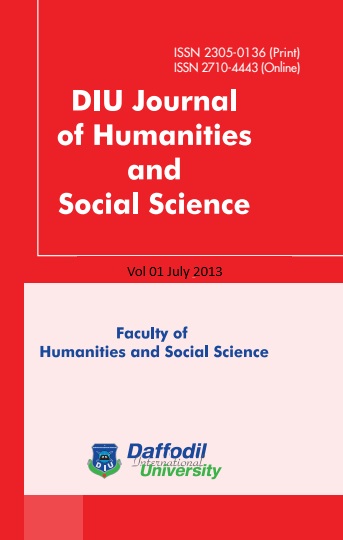TRANSFORMING JOURNALISM AND COMMUNICATION EDUCATION:
A FOCUS ON BANGLADESH AND PAPUA NEW GUINEA
DOI:
https://doi.org/10.36481/diujhss.v.01i1.edv91822Keywords:
Communication, journalism education, alternative media, media, exposure,, community radio.Abstract
The study focuses on Journalism and Communication education in developing countries that indicates a compromise and balance of traditional outlay and modern technology but resulted to a mismatch of ‘slow march to fast music’. Expansion of media is not commensurate with the population in both the countries studied. It has been observed that with thriving democracy, the growth of mass media is reflective with the growth of media education in Bangladesh, whereas the growth of media and the state of democracy both are in formative stage in Papua New Guinea (PNG). It was examined that media in Bangladesh have been contributing potentially to create pluralistic democratic values to a densely populated country. Newspapers and TV channels draw communication graduates from public and private universities. The study envisaged that Papua New Guinea, an independent country in 1975, and world’s most diversified nation with highest number of languages, 823 languages among 6.5 million people, craving for a working democracy with meager state of media in the country. On the other hand, alternative media education as conceptualized as ‘Civic Journalism’ got a trial in one of the public universities. It has been focused to rural areas and on the issues like human rights, good governance, gender, democracy, rule of law and justice, and environment.
Downloads
Downloads
Published
Issue
Section
License
Copyright (c) 2024 DIU Journal of Humanities and Social Science

This work is licensed under a Creative Commons Attribution-NonCommercial 4.0 International License.




